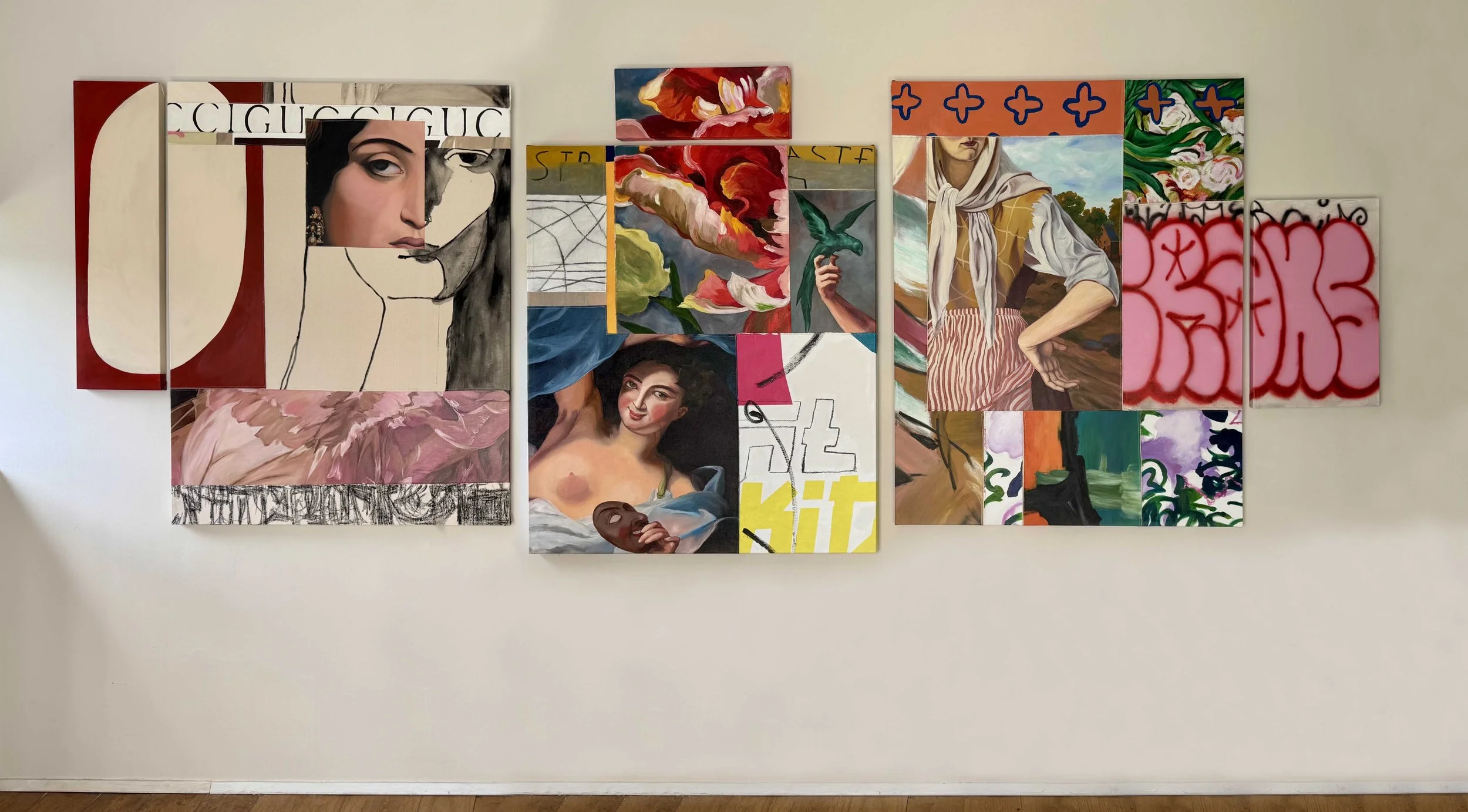Triptych for one
There’s something strangely satisfying (and vulnerable) about seeing three of your paintings leave the studio together, bound for someone else's wall, and knowing they will now exist in dialogue with each other outside your control.
This collector didn’t just buy three individual works. She envisioned them as a triptych. Not one that was made to be one, but three pieces from my Swipe for the Details series that she instinctively wanted to see side by side.
What struck me most was how naturally the triptych emphasized the internal logic of fragmentation already present in each painting. All three works are diptychs composed of two panels that function as duets, with visual ruptures and echoes built in. Installed side by side, this rhythm of interruption and continuation extended across the wall, amplifying the disjointed structure I had been working with. The fragmentation didn’t get resolved, it multiplied, and in doing so, felt even more coherent.
Seeing them installed this way made me realize how porous the borders are between my paintings. Especially in Swipe for the Details, which is about the fragments we're trained to notice (or miss) when consuming images in a hyper-digital, scroll-happy culture. These compositions are built like broken grids, echoing the way images show up in social media feeds: cropped, juxtaposed, lost in swipeable noise. The buyer wasn’t just collecting artwork, she was letting the fragments speak in her own sequence.
Maybe what I loved most was that the installation didn’t try to “reconstruct” a whole. It let the dissonance stay visible. Bits of baroque skin, graffiti lettering, floral ornament, bodies cut off mid-gesture, all stitched together through placement rather than narrative. As if the wall itself had swiped.
It made me feel like the work was doing what it’s meant to do: resisting coherence, yet seducing attention. Fragmented, but alive.
